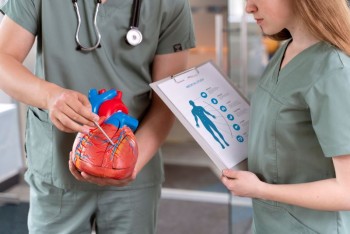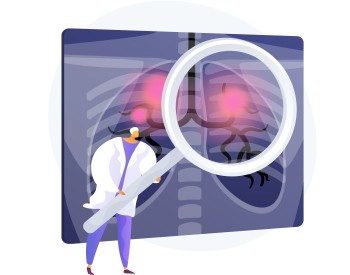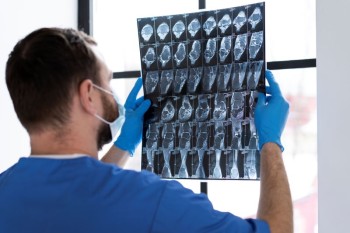
CT Whole Body Scans offer a quantum leap in precision, providing detailed images that enable healthcare professionals to diagnose conditions with unprecedented accuracy.
CT Whole Body Scan in India with Cost
CT Whole Body Scan: Illuminating the Inner Landscape
Introduction
Embarking on a journey through the realms of diagnostic imaging, the CT Whole Body Scan emerges as a comprehensive tool, offering a panoramic view of the intricate structures within the human body. This article is dedicated to unveiling the intricacies of the CT Whole Body Scan, exploring its significance, the scanning process, applications, and the transformative impact it holds in modern healthcare.
Understanding CT Whole Body Scan
The CT Whole Body Scan represents a technological marvel, utilizing computed tomography to generate detailed cross-sectional images of the entire body. This non-invasive imaging technique provides a holistic perspective, enabling healthcare professionals to assess organs, tissues, and structures with unparalleled clarity.
The Procedure Unveiled
Imagine a virtual exploration of the body's internal landscapes—that's the essence of a CT Whole Body Scan. Patients lie on a specialized table that moves through a circular machine, capturing cross-sectional images at different anatomical levels. The use of X-rays and advanced computer technology creates a detailed map of the entire body, offering insights into organ function and structure.
Valid concerns regarding radiation exposure during CT scans exist. Yet, contemporary machines are furnished with dose-reduction technologies, meticulously calibrating radiation doses. This prioritizes patient safety while maintaining impeccable image quality.
Applications Across Medical Disciplines
The diagnostic capabilities of CT Whole Body Scans extend across various medical disciplines. From detecting tumors, assessing organ abnormalities, to evaluating trauma-related injuries, this imaging modality plays a pivotal role in formulating accurate diagnoses and guiding comprehensive treatment plans.
Advantages Over Traditional Imaging
Bid farewell to the limitations of traditional imaging techniques. CT Whole Body Scans offer a quantum leap in precision, providing detailed images that enable healthcare professionals to diagnose conditions with unprecedented accuracy. The three-dimensional perspective enhances the understanding of complex anatomical structures and aids in devising tailored treatment plans.
Ensuring Patient Comfort and Safety
Patient comfort is integral to the imaging experience. While concerns about radiation exposure are valid, modern CT machines are designed to balance safety with image quality. Radiologic technologists prioritize patient well-being, ensuring a positive and reassuring environment during the scan.
Special Considerations for Specific Cases
Individualized approaches are essential, especially in cases where patients may have allergies, existing medical conditions, or concerns about contrast agents. Healthcare providers tailor the procedure to each patient's unique health considerations, ensuring the appropriateness of the CT Whole Body Scan.
Interpreting CT Scan Results
Interpreting the results of a CT Whole Body Scan requires specialized knowledge. Radiologists carefully analyze the images to identify abnormalities, assess organ function, and guide treatment decisions. Collaborative discussions between healthcare providers and patients contribute to a comprehensive understanding of the results.
Real-Life Cases and Success Stories
The impact of CT Whole Body Scans on patient outcomes is noteworthy. Real-life cases and success stories underscore how this advanced imaging technique has played a pivotal role in accurate diagnoses, leading to successful treatment interventions and improved patient outcomes.
The Future of CT Whole Body Scans
As technology continues to advance, the future of CT Whole Body Scans holds promise for further enhancements. Ongoing research aims to refine imaging capabilities, potentially reducing scan times, increasing resolution, and expanding applications. The evolving landscape of diagnostic imaging is set to benefit from these future innovations.
Patient Education and Awareness
Empowering patients with knowledge about CT Whole Body Scans is crucial for informed decision-making. Increased awareness of the benefits, safety measures, and potential applications of this imaging technique fosters a collaborative relationship between patients and healthcare providers.
Costs and Insurance Coverage
Understanding the financial aspects of undergoing a CT Whole Body Scan is vital. While the diagnostic value is significant, patients should be aware of potential costs and verify insurance coverage. Open communication with healthcare providers ensures transparency regarding any out-of-pocket expenses.
Common Misconceptions
To ensure a clear understanding, debunking common misconceptions about CT Whole Body Scans is essential. Addressing concerns such as exaggerated radiation risks or misconceptions about scan duration contributes to a more informed and confident patient experience.
Conclusion
In conclusion, the CT Whole Body Scan emerges as a transformative force in diagnostic imaging, providing a comprehensive view of the entire body's internal structures. From its detailed procedure to real-life success stories and the potential for future advancements, this article aimed to provide a holistic understanding of the significance and impact of CT Whole Body Scans in modern healthcare.
FAQs - Your Questions Answered
1. How long does a CT Whole Body Scan procedure typically take?
The duration of a CT Whole Body Scan varies but generally ranges from 30 minutes to an hour, depending on the specific areas being imaged and the complexity of the examination.
2. Is there any discomfort associated with undergoing a CT Whole Body Scan?
The procedure is generally painless. Patients may experience a sense of confinement during the scan, but radiologic technologists are trained to ensure patient comfort throughout the process.
3. Are CT Whole Body Scans covered by insurance?
Insurance coverage for CT Whole Body Scans depends on the specific insurance plan and the medical necessity of the procedure. Patients are encouraged to check with their insurance providers to understand coverage details.
4. Can pregnant individuals undergo a CT Whole Body Scan?
While the use of radiation is generally minimized, pregnant individuals are typically advised to avoid unnecessary medical imaging. Alternative imaging methods may be considered, and consultation with a healthcare provider is recommended.
5. What specific preparations are needed before undergoing a CT Whole Body Scan?
For certain instances, it may be necessary to fast before the procedure. Patients should notify their healthcare providers about any allergies, current medical conditions, or medications they are using.
6. Can individuals with claustrophobia undergo a CT Whole Body Scan
comfortably?
Radiologic technologists are trained to assist individuals with claustrophobia during the procedure. Communication and accommodations can often be made to ensure a more comfortable experience.
7. Is there a risk of allergic reactions to contrast agents used in CT Whole Body Scans?
While allergic reactions are rare, it's essential to inform healthcare providers about any known allergies or previous reactions to contrast agents. Medical professionals are well-prepared to manage and minimize potential risks.
8. How often are CT Whole Body Scans recommended for routine health check-ups?
The frequency of CT Whole Body Scans for routine health check-ups varies based on individual health factors. Healthcare providers consider factors such as age, medical history, and risk factors when recommending imaging examinations.
9. Are there age restrictions for undergoing a CT Whole Body Scan?
CT Whole Body Scans are generally safe for individuals of various ages. However, healthcare providers consider factors such as radiation exposure and medical necessity, especially for pediatric patients and older individuals.
10. Can individuals with metal implants or devices undergo a CT Whole Body Scan?
While most metal implants are safe for CT scans, it's crucial to inform healthcare providers about any metal objects within the body. They can assess the compatibility and ensure the safety of the imaging procedure.
11. How soon can results be expected after a CT Whole Body Scan?
The turnaround time for CT Whole Body Scan results varies, but it typically ranges from a few days to a week. Healthcare providers strive to provide timely and accurate reports for effective patient management.
12. What information should patients provide to healthcare providers before a CT Whole Body Scan?
Patients should provide a comprehensive medical history, including existing health conditions, medications, allergies, and any previous surgeries. This information helps healthcare providers tailor the procedure to individual needs.
(0)
Login to continue



